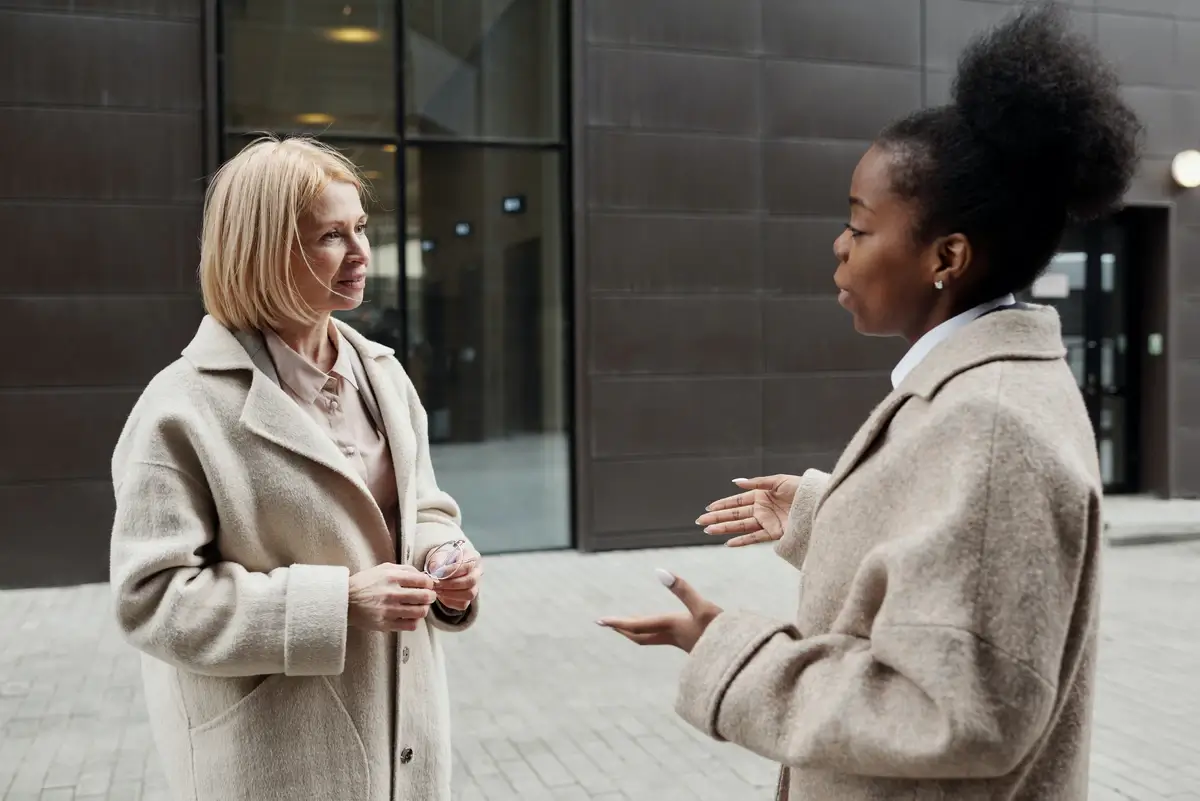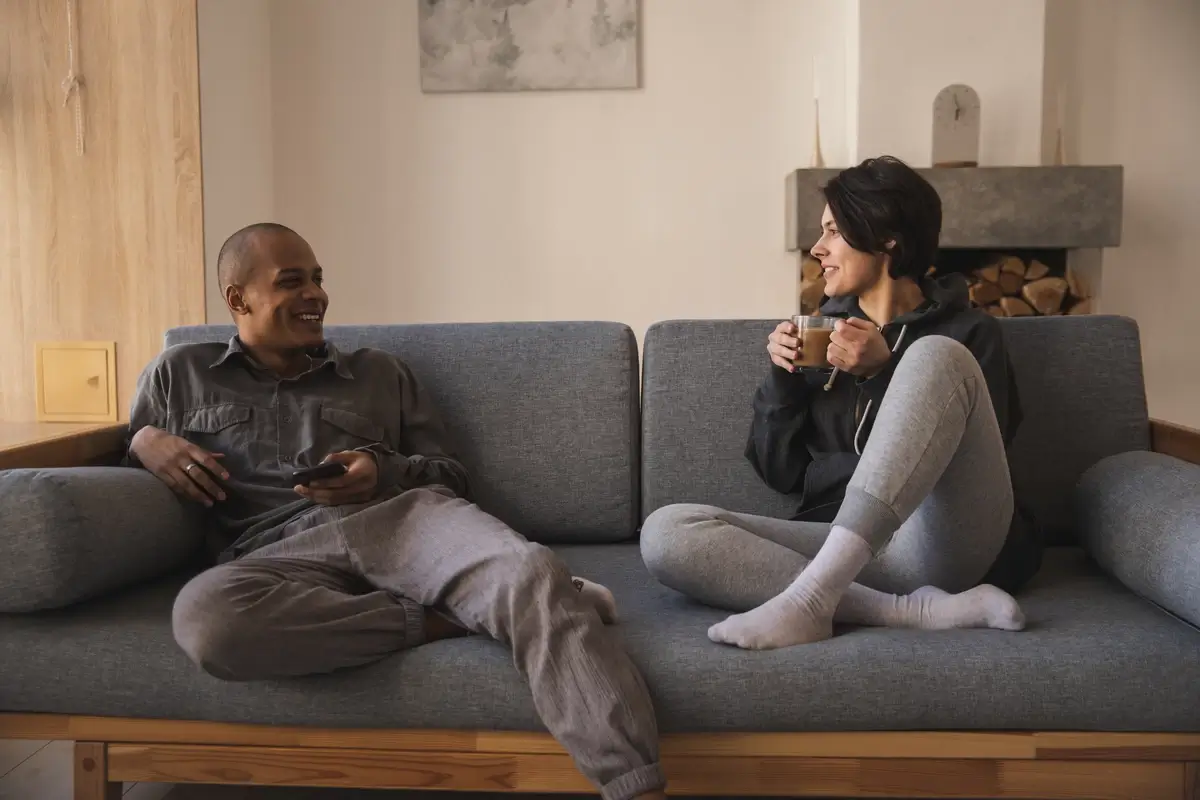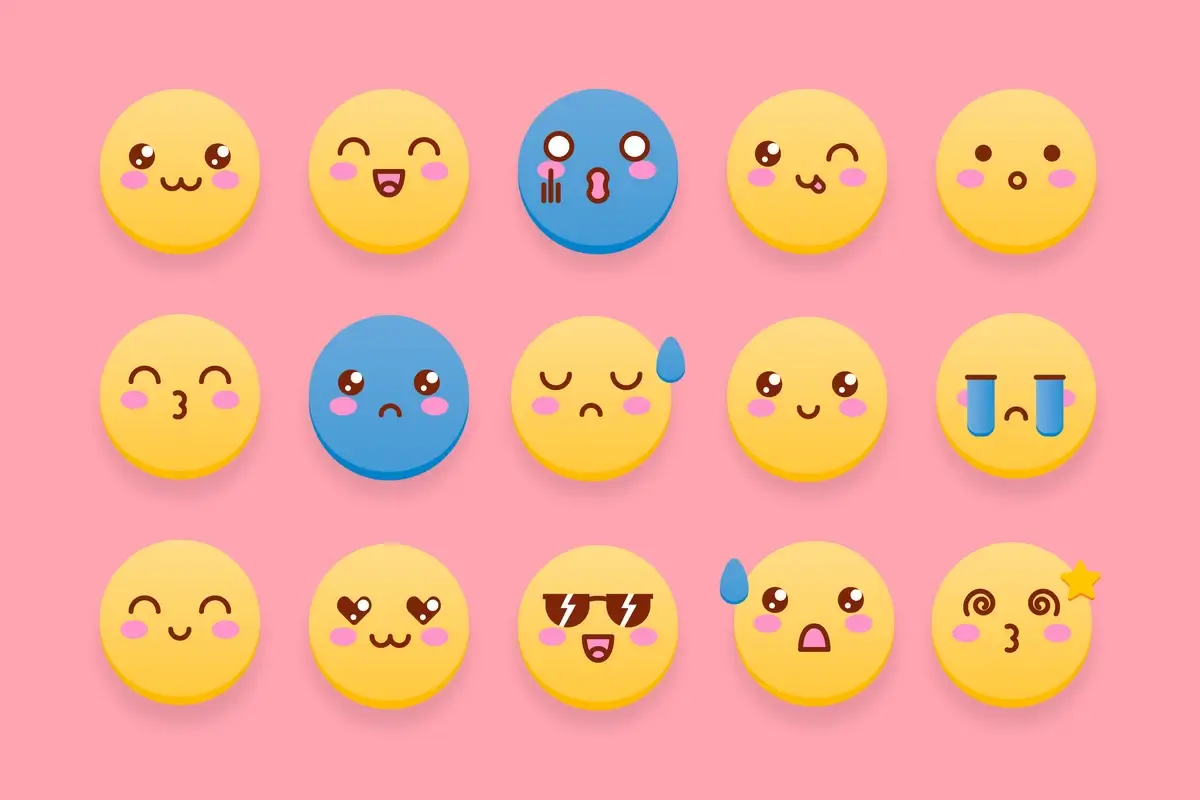Step right into a world where every blink, tweet, and tap conceals a hidden universe of stories and secrets – welcome to the enthralling spectacle of communication! Ever considered how your emoji-laden text is a modern echo of Egyptian hieroglyphics? Or mused upon the irony of our ancestors conversing through intricate cave paintings, while we swap tales through pixelated screens?
Meandering from whispering willows to the bustling digital highways, let’s traipse through communication fun facts, spanning across history and plunging into today’s cybernetic age, exploring amazing facts that bridge yester millennia with the instantaneous ‘sent’ notification on your screen.
1. Historical Chatter: The Origins of Human Communication
Ah, the primordial gossip, when the tales were told not through words, but expressive art and an array of animated gestures! The scholars suggest that our linguistic journey started approximately 100,000 years ago. Although these communications were not the sophisticated discussions we know today, they conveyed vital information – warnings, stories, and possibly, the first-ever stand-up comedy bits, all narrated in the mesmerizing glow of the cave’s firelight.
The echoing beats of ancient tales still whisper to us through the delicate etchings upon cave walls and artifacts, etching stories and events in a timeless dance of shadows and shapes. While words may have been scarce, the narratives were rich, weaving tales of hunts, celebrations, and perhaps, the first sparks of ancient dramas, skillfully displayed on the cavernous canvases of yore.

Image by wirestock / Freepik
2. Blink and Miss: The Power of Non-Verbal Communication
An arched eyebrow, a subtle smirk, or a sly wink – the silent, yet profound performers in our daily communication! Dr. Albert Mehrabian, a pioneer in non-verbal communication research, claimed that a massive 93% of communication effectiveness is determined by non-verbal cues. The potency of these silent communicators, from facial expressions to postures, elegantly dances through our interactions, often scripting more authentic stories than our words ever could.
Consider this: a mere smile can bridge gaps, forging connections without uttering a single syllable. It’s intriguing how we, the talkative beings, often find solace in unspoken dialogues, where emotions find a canvas not in eloquent phrases but in the simple, raw, and unadulterated gestures and expressions that speak volumes about our internal worlds.
3. It’s All in the Wrist: Ancient Wrist-tapping Communication
A tap here, a gentle beat there, and voilà, a message is sent! The Yoruba people in Nigeria encapsulated the epitome of rhythmic communication with their “talking drums”. This wasn’t merely music but an intricate language, where each beat echoed a word, resonating across vast landscapes, knitting a network of messages across the sprawling terrains. This rhythmic Morse code of antiquity belted out messages, tales, and perhaps, an ancient form of news broadcasting.
Delve deeper into the melodic syntax of these drums and you’ll find a meticulous language, where varied pitches and beats communicated distinct messages, demonstrating an innovative and harmonious blend of culture, communication, and technology, deeply rooted in their time. This incredible feat of ancient engineering allowed complex messages to be delivered far and wide, all with a strategic tap, tap, tap, echoing through the endless African plains.

Image source: smithsonianmag.com
4. Dialogues Across Ages: The Evolution of Communication Technologies
Smoke signals to instant messaging, communication technologies have witnessed a transformative journey through epochs. The ancient Romans, sophisticated in numerous domains, utilized a nuanced system of smoke signals for conveying messages across expanses, aligning themselves with an age-old tradition that echoes across varied civilizations. Samuel Morse’s invention of the telegraph in the 1830s punctuated the 19th century with a revolutionary communicative pulse, converting electrical dots and dashes into coherent messages and connecting distant lands with electrical veins.
Transitioning from the telegraphic clicks to the digital age, we’ve woven a communicative web where words now whiz across cyberspaces, reaching global recipients within a mere blink. With over 4.9 billion internet users as of 2023, communication now cascades through digital channels, effortlessly bridging geographies and crafting a global village where dialogues flow unhindered, crafting narratives that are concurrently personal and collective, propelling humanity towards an evermore interconnected future.
5. Speak Up: Amazing Facts About Voice Dynamics
Picture this: A world that ebbs and flows on the delicate waves of our voices. The intricacy of voice dynamics plays an undeniably pivotal role in our interactions, embodying a vibrant medley of tones, pitches, and volumes. Dr. Mehrabian’s research also underscores the weight of vocal elements in communication, attributing 38% of the message conveyed to these melodious modulations when emotions are involved.
Interestingly, variations in our voice not only broadcast our moods and intentions but also mould the listener’s perceptions and responses. Whether it’s the gentle lull of a soothing whisper or the authoritative boom of a command, our voices silently sculpt the silhouettes of our verbal exchanges, influencing and being influenced by the interpersonal dynamics at play.

August de Richelieu / Pexels
6. Power of Silence: When No Words Say It All
An art, a strategy, a refuge – silence often communicates louder than a thundering speech. There’s power tucked away in those quiet moments, where words retreat and silence subtly takes the center stage, morphing into a versatile communicator. The poignant pauses in Martin Luther King Jr.’s “I Have a Dream” speech, for instance, spoke volumes, etching every uttered word into the annals of history and the hearts of listeners.
Silence is not just an absence; it’s a presence that seamlessly intertwines with our spoken words, embodying a wealth of expressions, resistances, and surrenders. A strategically placed pause can intensify a message, create suspense, or offer a sanctuary for reflection, whispering multiple tales in its muted tones.

Image by wayhomestudio / Freepik
7. Business Talk: How Effective Communication Boosts Profits
Let’s chat money and mull over a fact: robust communication is the linchpin of flourishing business models. While fiscal strategies sculpt the economic face of a business, it’s the veins of effective communication that silently orchestrate the symphony of successful corporate functionality. Effective communication skills, whether it’s transparent internal dialogues or persuasive customer interactions, cradle the potential to elevate profits and sculpt a positive organizational culture.
The tangible impact on the financial frontier is evident, considering a report by Holmes (a report based on a study by Watson Wyatt), which stated that companies with effective communication practices were more than 50% more likely to report turnover levels below the industry average. So, it isn’t merely talk; strategic communication is essentially an invisible ladder scaling the walls of prosperous business heights.

Image by master1305 / Freepik
8. Words, Words, Words: The Average Human Vocabulary Count
Imagine, just for a moment, the vast seas of words that have caressed your ears over the years. The average active vocabulary of an English-speaking adult hovers around 20,000 words, with a passive vocabulary (words we recognize but don’t use) swelling to approximately 40,000. This hefty word bank isn’t merely a linguistic treasure; it’s a key that unlocks the myriad chambers of our expression, exploration, and comprehension in the grand castle of communication.
Delve a little deeper, and you’ll discover that by age 20, a person knows between 3,000 and 20,000 words used more commonly by adults, revealing a blossoming word garden that enriches as we saunter through life’s varied experiences. So, here’s to the profound and sometimes perplexing plethora of parlance that peppers our dialogues!
9. Messages Beyond Speaking: Surprising Ways Animals Communicate
In the mesmerizing tapestry of the animal kingdom, communication weaves its own magical threads, binding creatures in a web of messages, signals, and information. It’s not merely a “woof” or a “meow”; it’s a sophisticated symphony where even colors, like the breathtaking bioluminescence of deep-sea creatures, become enthralling essays of silent communication.
Dance through the animal kingdom, and you’ll witness a multitude of communication mediums, from the delicate dance of honeybees, signaling directions to nectar sources, to the extravagant displays of peacocks, narrating tales of attraction and rivalry. There, messages aren’t just spoken; they’re danced, displayed, and even dazzled into the conversation!

Image by wirestock / Freepik
10. Talkative Humans: How Much Time We Spend Talking Daily
Let’s traverse through a day in the life of the average Joe or Jane, shall we? Talking, it seems, is as intrinsic to our existence as breathing, with studies suggesting that women speak approximately 20,000 words daily, while men articulate around 7,000. But these aren’t just mere words cast into the wind; they’re vessels that ferry emotions, information, and connections, tirelessly traversing the avenues of our daily interactions.
Whether it’s the mundane “how’s the weather” chat with a neighbor or the profound late-night conversations that dive into the depths of our beings, our talking time subtly stitches into the vibrant quilt of our social interactions, relationships, and memories. From sunrise dialogues to midnight monologues, our words waltz tirelessly through the day, crafting countless unseen threads of connection.
11. Beyond Words: Music as a Universal Language
Let the notes waft through the air, and you’ll sense it – the unspoken, yet profoundly articulate language of music. Universally enchanting, music transcends traditional communication boundaries, embodying an ethereal vocabulary that converses not with words, but with emotions, memories, and soul. The phenomenon is not merely experiential but is grounded in research, like the studies indicating music’s capability to evoke powerful emotional responses in listeners.
Journey through history, and you’ll witness music as a silent yet potent communicator, resonating through the ages as anthems of revolutions, lullabies of love, and echoes of eternal stories. From the rhythmic beats echoing in ancient rituals to the synthetic melodies pulsating through contemporary realms, music whispers, declares, and sings messages that words sometimes fail to convey.
12. Communication in the Love Lane: How Partners Understand Each Other
The labyrinthine pathways of romantic communication are laden with subtleties and secrets. Research tells us that effective communication in relationships transcends words, delving into realms where gestures, tones, and expressions become eloquent narrators of love and conflict alike. The University of California found that partners tend to mimic each other’s linguistic styles when their romantic interest is mutual, highlighting a fascinating linguistic dance of love.
Further, “the five love languages,” conceptualized by Dr. Gary Chapman, introduces us to a spectrum of communicative expressions in relationships – Words of Affirmation, Acts of Service, Receiving Gifts, Quality Time, and Physical Touch. Each illustrates how communication in the amorous domain encompasses a myriad of dialects, each scripting its unique love story.

EKATERINA BOLOVTSOVA / Pexels
13. Skills in the Spotlight: The Art of Public Speaking
Ah, the spotlight! Where words become warriors and messages turn into movements. Public speaking, often cited as one of the most common fears (hello, glossophobia!), isn’t merely a skill but an art where communication transcends mere information transfer, evolving into an enthralling performance. History beams with its impacts, from Martin Luther King Jr.’s “I Have a Dream” to Winston Churchill’s wartime speeches, exemplifying the power of well-crafted oratory.
Peeking behind the curtains reveals intricate rehearsal, research, and a fine-tuning of verbal and non-verbal cues, crafting a potent concoction that can stir minds and hearts alike. The message, here, isn’t merely heard; it’s felt, experienced, and often, ardently remembered.

Image by master1305 / Freepik
14. Digital Age Dialogues: The Rise of Emojis in Communication
Welcome to the digital era, where emojis 😃 have blossomed into a vibrant language of their own, punctuating our online conversations with colorful bursts of emotions, intentions, and even humor. The Oxford Dictionary, in a nod to this modern communicative phenomenon, crowned “😂” (Face with Tears of Joy) as the Word of the Year in 2015, spotlighting emojis as legitimate and impactful communicative tools in contemporary dialogues.
Interestingly, a study by Bangor University revealed that 72% of young adults find it easier to express their feelings using emojis rather than words. This visual vocabulary, thereby, is not merely a digital adornment but a potent, expressive, and universally comprehensible communicate tool, navigating through the vast seas of global digital communication.

Image by mons.design / Freepik
15. Mind Reading: Psychological Tricks in Communication
Engage the gears of psychology in communication, and you unveil a fascinating world where words, pauses, and non-verbals become powerful tools of influence and understanding. Psychological techniques, such as the use of pauses for emphasis and mirroring body language to build rapport, have found substantial acknowledgment and application in various communicative settings, including negotiations and casual conversations alike.
Derren Brown, a British mentalist and illusionist, showcases the intriguing potential of psychological principles in communication, often astonishing audiences with seemingly mystical abilities to influence and predict behavior. The essence, however, lies not in the mystical but in astute observational and communicative prowess, offering a mesmerizing peek into the psychology-steeped realms of human interaction.
16. Workplace Whispers: The Role of Communication in the Workplace
In the intricate web of the workplace, communication gently weaves its threads, crafting a tapestry that can either soar as the sails of organizational success or tangle into knots of misunderstandings and conflicts. For instance, a survey by ClearCompany found that 86% of employees blame workplace failures on lack of communication. Ah, the subtle power of passing words and lingering silences in orchestrating the symphonies of collaborative endeavors and team dynamics!
Moreover, the quintessence of effective communication in workplace environments bridges hierarchical gaps, melding leadership aspirations with team expectations, and sculpting a culture where ideas flutter freely, innovations blossom, and conflicts find amicable resolves. The dialogues here, hence, become the unseen architects of organizational triumphs and tribulations alike.

Christina Morillo / Pexels
17. Study Speak: How Students Use Communication Skills Differently
As we delve into the realms of students and their communicative worlds, we uncover a mosaic where words, gestures, digital messages, and even silent study sessions knit a narrative far more profound than mere information exchange. One cannot ignore the advent of digital communication platforms, especially considering that during the COVID-19 pandemic, online learning tools witnessed a monumental surge, with Zoom, for instance, skyrocketing to 300 million daily meeting participants in April 2020, from a mere 10 million in December 2019.
This isn’t merely a technological tale. Students today employ a diverse communication palette, blending traditional verbal and non-verbal cues with digital emoticons, collaborative online platforms, and virtual meet-ups, crafting a hybrid communicative landscape where learning, socializing, and expressing find versatile avenues, subtly shaping their educational and interpersonal journeys amidst the evolving socio-digital landscapes.
FAQ
What is communication in few words?
Communication encompasses the act of transferring information from one place, person, or group to another. Every communication involves the sender, message, and a recipient. Various mediums can be utilized in the process, such as speech, writing, visual images, and even non-verbal cues like body language.
What is the basic fact of communication?
The foundational fact about communication is that it’s bidirectional, necessitating both a sender and a receiver for it to occur effectively. Notably, the receiver must comprehend the message from the sender, and for successful communication, feedback – verbal, non-verbal, or both – is often vital. Essentially, the process is incomplete without understanding and feedback.
Why is communication important?
Communication is the bedrock upon which societies, relationships, and organizations are built. It facilitates understanding, fosters relationships, facilitates the exchange of information and ideas, encourages emotional expression, and enables social organization. Moreover, effective communication also aids in problem-solving and decision-making processes by transmitting pertinent information.
Why do humans love to communicate?
Humans have an intrinsic need to interact and connect with others, forging relationships and understanding their social environment. Communication serves not only as a tool for information exchange but also as a means for socialization, emotional expression, and community building. Through varied communication forms, people establish familial ties, friendships, social networks, and professional connections, satisfying both practical and emotional needs.
What is strong communication?
Strong communication embodies clarity, coherence, conciseness, and, crucially, a connection between communicators. It ensures that the transmitted message is clearly understood by the receiver. This encompasses effective listening, clear articulation of ideas, acknowledgment of received messages, and considerate addressing of feedback and queries, crafting a two-way, beneficial communication loop.
What good communication looks like?
Good communication is characterized by a clear exchange of information where all parties involved comprehend and, if necessary, act upon the information shared. It necessitates active listening, verbal and non-verbal feedback, empathy, respect, and an understanding of the communicated message. Additionally, in a healthy communication environment, parties feel heard, respected, and valued.
What is communication habits?
Communication habits are recurrently used techniques or modes in interpersonal interactions, often developed unconsciously over time. These can be positive, such as actively listening and providing constructive feedback, or negative, like interrupting or offering unsolicited advice. Communication habits significantly influence personal and professional relationships, determining how effectively one can exchange and comprehend information.
What are 4 most common communication styles?
- Passive Communication: Indicated by a reluctance to express thoughts and feelings, often leading to permitting others to infringe upon one’s personal boundaries.
- Aggressive Communication: Characterized by expressing thoughts and feelings overtly and dominantly, often neglecting the feelings and thoughts of others.
- Passive-Aggressive Communication: Incorporating indirect and elusive expression of thoughts and feelings, usually in an attempt to subtly convey hostility or negativity without overt confrontation.
- Assertive Communication: Encompassing the open, honest, and direct expression of thoughts and feelings while maintaining respect for others, often considered the most effective and healthy communication style.





